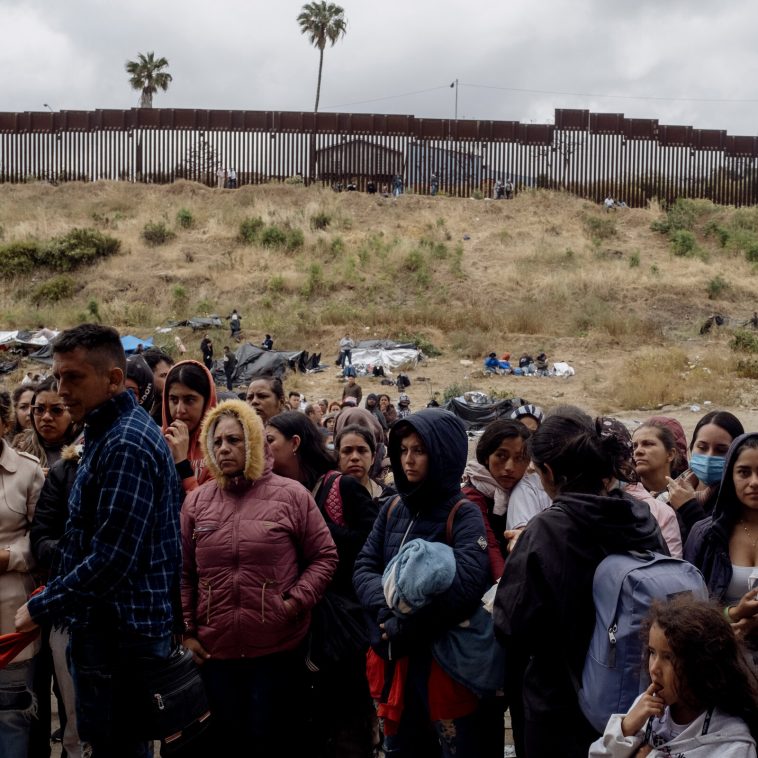The House Judiciary Committee is gearing up to conduct a field inspection centering on the border predicament in the state of California. This location is emerging as a central point in the wave of migrant encounters on the southern border. Legislators have begun studying the operational situation of the Border Patrol in San Diego Sector. During these expeditions, the lawmakers had the opportunity to cross one of the most active migrant crossing zones, also known as ‘Whiskey 8’ located in San Ysidro.
On their visit to ‘Whiskey 8’, the policymakers came across a group of five migrants. These individuals had breached a loophole in the border wall and were ready to willingly surrender to the Border Patrol. Unfamiliar with the Biden administration’s CBP One App – a technological initiative to streamline legal migrant crossings – they sought other means to cross the border.
One of the migrants, hailing from India, conveyed his backstory. He had previously sought asylum in Brazil, but escalating crime rates in the country prompted him to look for safety in the United States. The five-member group also comprised a father and daughter from Guatemala and a mother alongside her eight-year-old daughter from Colombia.
These migrants narrated their perilous journey, sharing that they had paid a hefty sum to cartel members to facilitate their passage. Despite the threat of being deported back to their countries of origin, they remained hopeful of their chances to stay in the United States. All members of this group were buoyed by the fact that they had family members already living in states such as New Jersey, California, and Arizona.
Among the lawmakers attending the hearing was Rep. Andy Biggs from Arizona. Biggs stressed on the need for stringent measures to deter individuals from unlawfully crossing the border at points other than regulated entry points. His standpoint was clear – everyone wishing to enter the country should follow the legal channels which already allow the influx of about a million people, surpassing the combined total of the rest of the world.
One of the key issues that was brought into focus during this session was the rampant flow of the narcotic, fentanyl, across the border. The San Diego Sector has been recording alarming figures in terms of fentanyl seizures, parallel to the Tucson Sector. Legislators were shown a ‘fentanyl locker’, a facility where authorities store the drug post confiscation, serving as stark evidence of the situation at hand.
Although lawmakers have frequently made journeys to Texas and Arizona to study the on-ground situation, their visits to California have been comparatively fewer. Despite this, the San Diego Sector stands out as the hotspot for migrant interactions. It has, moreover, become the leader in confiscation operations of fentanyl this year.
This sector alone has secured more than 5,000 pounds of fentanyl, nearly one-third of the total amount seized along the entire southwest border. Statistics provided by the agents reflected a seizure of 17,000 total pounds of the drug in the year 2024, marking a 26% decrease from the amount seized the prior year.
Notwithstanding the decline, the past three years have cumulatively resulted in the confiscation of approximately 58,000 pounds of fentanyl. If a breakdown of this quantity were to be given, it could potentially equate to nearly 13 billion fatal doses, illustrating the gravity of the situation.
The field hearing organized by the House Judiciary Committee represents an essential step toward understanding and addressing the border crisis in California. Elevated migrant encounters and the menacing drug trafficking situation, primarily concerning fentanyl, have necessitated these sessions.
Lawmakers, while encountering real-life incidents like the one at ‘Whiskey 8’, get firsthand experience of the predicaments faced by migrants. They hear stories of people leaving their homeland due to extreme conditions, and in search of better prospects.
The increasing flow of fentanyl across the border only deepens the sense of urgency on this matter. With the San Diego Sector emerging as the epicenter of migrant encounters and fentanyl seizures, the policies and strategies developed here could potentially deter similar situations in other areas.
Despite the apparent drop in fentanyl seizures, the overall numbers across the past three years point towards a large-scale issue. Substantial efforts are thus needed not only in curbing the influx of migrants outside of legal pathways but also in restricting the menacing advance of the fatal narcotic.


